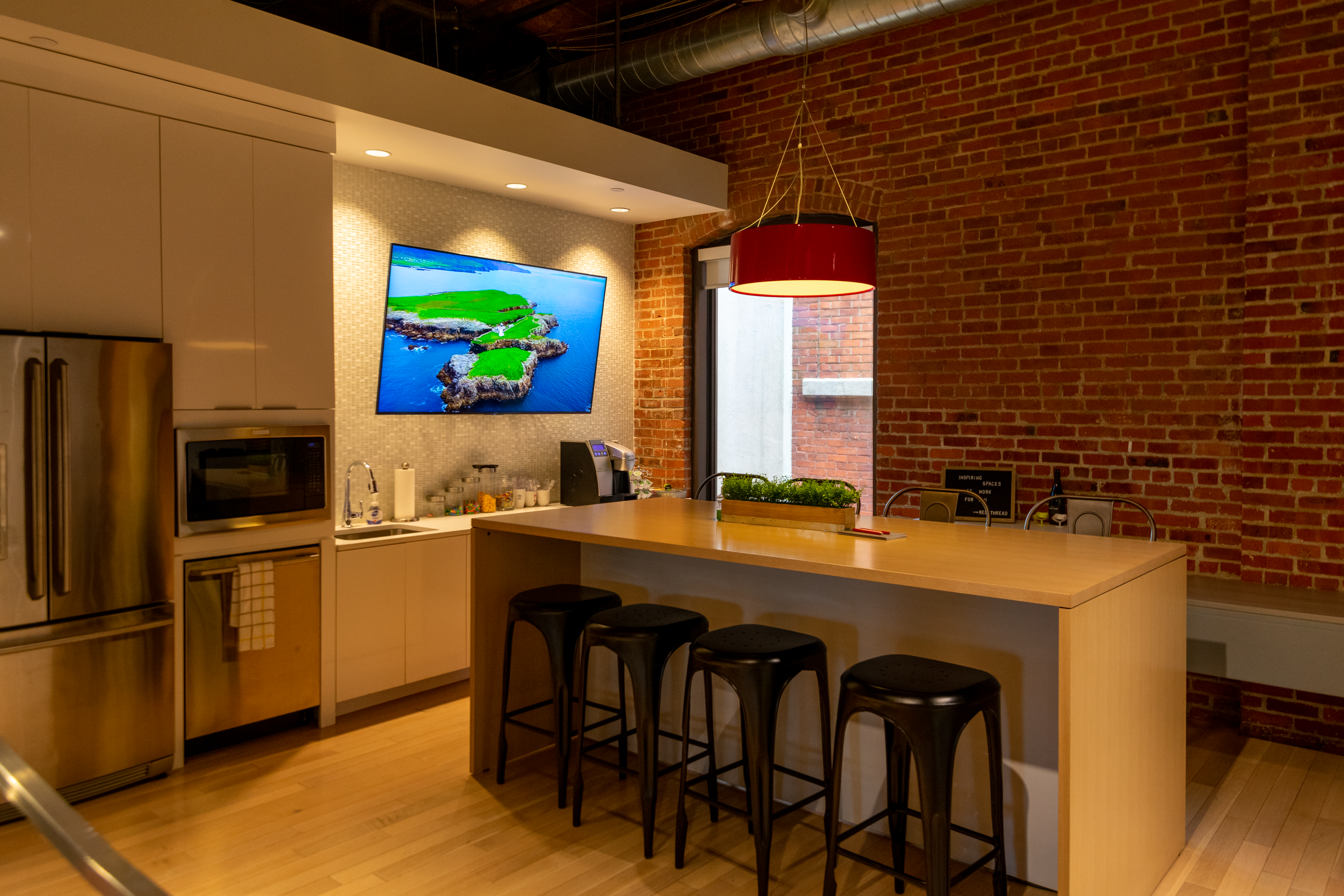Red Thread and the future of the office

Flexibility is the watchword for the design of future offices. Just as workers want more flexibility regarding the ability to work from home or the time they are physically in the office, the demands of the modern workplace require a space that can serve multiple purposes and can be easily reconfigured to fit changing needs, according to Jason Chapman, vice president in charge of sales for Red Thread.
Red Thread is an office furnishing provider founded 10 years ago by the merger of several companies including Connecticut-based BKM. Their Stamford offices double as a showroom of the latest designs and furnishing options, including an expanding array of audio-visual solutions for the increasingly online workspace.
“It really comes together and becomes quite powerful because we can leverage each other’s knowledge, resources and research from our different partners to help our clients get the best result for their space,”Chapman said of the value added by having a “one-stop-shop”for office solutions that also conducts extensive research with industry partners. “It means a lot of different things for different companies, and the one consistent thing we see is that ‘hybrid’ is unique to everybody.”
According to Chapman, the key to coaxing hybrid workers to readily come to the office is ensuring that the office feels as good, if not better, for productivity.
“Technology is one of the top three drivers, when we’re trying to get people back into the office, whether it’s one day, three days or five days a week they need to have an at least equitable experience when they’re in the office,” he said.
Spaces that can be reconfigured without hiring a contractor or installing drywall have been in increasing demand, Chapman explained, observing that private spaces suitable for small groups to hold meetings are in increasing demand.
“You have to design your space a little bit more flexibly, because you don’t really know who’s going to be in on what day and what they’re going to be doing,”he added. “I think a lot of companies are adopting what is sometimes called ‘free address,’ or unassigned seating or desk hoteling. We just did an installation for a company where there are about 600 and some-odd seats for about 900 employees.”
Chapman stated this system leveraged a hybrid workforce in part by making desks reservable and by assigning teams to different “neighborhoods”within the office. That way, desks are always near relevant co-workers while maintaining high flexibility. Alternatively, the different neighborhoods can be given designated modes of work, such as collaborative space or quiet space where employees can tune out distractions.
Privacy “pods”are also becoming increasingly popular, according to Chapman. Open offices can make it difficult to enjoy privacy, and these new smaller spaces can provide some acoustic isolation without creating a feeling of claustrophobia. Â
Chapman did allow that fundamental changes to the way office spaces work can be jarring. To smooth the transition, Red Thread has developed change management tools that can help an entire company change how they conceive of their office space as well as track use to develop even more effective configurations. However, he said, the best way is to lead by example.
“Most customers are pushing leadership to also adopt what they’re preaching to their people,”Chapman said. “So, if you’re really trying to have a culture that inspires the non-assigned seating and collaborative work such as using a room with a reservation it’s got to come from the top down.”